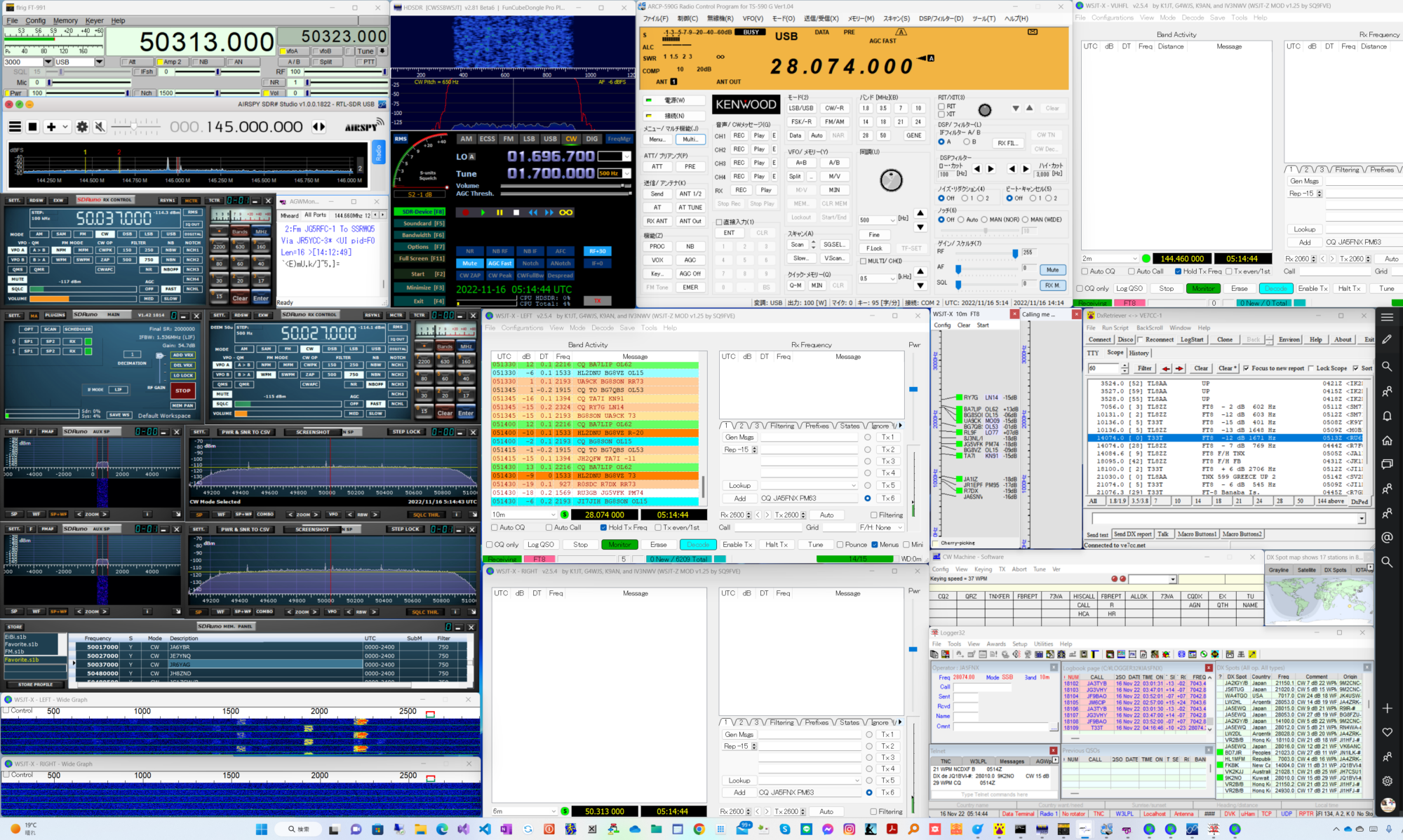10M RTTYが FT8 Roundupに模様替えしました。
https://www.rttycontesting.com/
FT8 Roundup Rules
1. Objective: Amateurs worldwide contact and exchange QSO information with other amateurs using FT8 on 80, 40, 20, 15 and 10 meter bands. Any station may work any other station. Stations may be worked once per band. Participants must use WSJT-X version 2.0, release candidate RC4 or later, to ensure they are able to transmit and receive the exchange messages the event requires. See Rule 7 for more details.
2. Date and Contest Period: First full weekend of December. Begins 1800 UTC Saturday, ends 2359 UTC Sunday (December 1-2, 2018).
2.1. No entrant may operate more than 24 hours out of the 30-hour contest period.
2.2. The six hours of off time must be taken in no more than two blocks.
3. Entry Categories:
3.1. Single Operator: 100 watts transmitter output or less.
3.1.1. All entrants are allowed only one transmitted signal at any given time. (SO2R is allowed but you cannot transmit on both radios during the same cycle.) Anyone found to be transmitting two signals at the same time will be reclassified as Checklog.
3.2. Multioperator: 100 watts transmitter output or less.
3.2.1 Includes those that receive assistance with logging or relief operators, etc.
3.2.2 Multioperator stations are limited to 6 band changes (maximum) in any clock hour.
3.2.3 The clock hour is from zero through 59 minutes.
3.2.4 Band changes are defined so that, for example, a change from 20 meters 15 meters and then back to 20 meters constitutes two band changes.
3.2.5. All entrants are allowed only one transmitted signal at any given time.
4. Exchange:
4.1. United States: Signal report and State.
4.2. Canada: Signal report and Province.
4.3. DX: Signal report and consecutive serial number, starting with 001.
5. Scoring:
5.1. QSO Points: Count one point for each completed QSO.
5.2. Multipliers: Each US state (except KH6 and KL7) plus the District of Columbia (DC), Canadian provinces/territories: NB (VE1, 9), NS (VE1), QC (VE2), ON (VE3), MB (VE4), SK (VE5), AB (VE6), BC (VE7), NWT (VE8), NF (VO1), LB (VO2), NU (VYØ), YT (VY1), PEI (VY2) and each DXCC country. KH6 and KL7 count only as separate DXCC entities.
5.2.1. Multipliers count only once (not once per band).
5.2.2. The US and Canada do not count as DXCC entities.
6. Reporting:
6.1. 7-Day Deadline: All entries must be postmarked or uploaded by 2359 UTC December 9, 2018.
6.2. Logs in Cabrillo format format must be emailed to ft8-ru@cqww.com.
6.3. The Cabrillo entries include the header and the complete QSO list.
7. Miscellaneous: Participants must use WSJT-X version 2.0 RC4 or later to ensure they are able to transmit and receive the exchange messages the event requires. Unattended operation is not permitted. Utilizing QSO/macro automations is not permitted. Fox-and-Hounds mode is not permitted (each contact must be carried out in a one-to-one mode.)
It is highly recommended that you read the WSJT-X 2.0 Quick Start Guide before operating the contest.
Suggested frequencies are 3.590-3.600, 7.080-7.100, 14.130-14.150, 21.130-21.150 and 28.160-28.200 MHz. Set the WSJT-X dial frequency to a multiple of 2 kHz, for example 7.082 MHz.
Note: The WSJT-X development team proposes that run stations should select integral multiples of 200 Hz as their audio transmit frequencies and check the TX EVEN/1ST box. Search and-pounce (S+P) stations should call at frequencies 0, 60, or 120 Hz above the run frequency. The WSJT-X user interface has tools to make these settings easy. Tap your
F3 or F5 keyboard keys to see concise lists of relevant keyboard and mouse shortcuts.
8. Awards: Certificates will be awarded to all participants and can be downloaded online when available.
